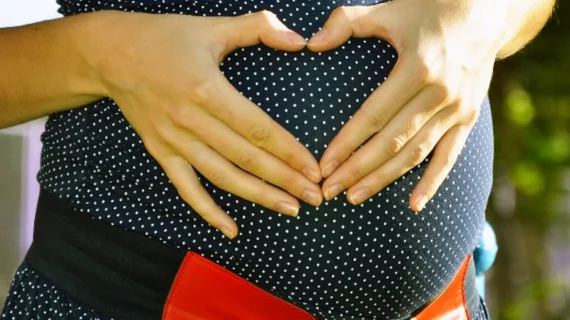Maternal social disadvantages linked with reduction in baby brain volumes at birth
A new JAMA Network Open study of 280 mothers and their newborns found that prenatal exposure to maternal social disadvantage—defined by factors including health insurance status, highest educational level, Area Deprivation Index, and Healthy Eating Index—is associated with a reduction in neonatal brain volumes and reduced cortical folding at birth.
“Results highlight that associations between poverty and brain development begin in utero and are evident early in life. These findings emphasize that preventive interventions that support fetal brain development should address parental socioeconomic hardships,” wrote first author Regina L. Triplett, MD, MS, a pediatric neurology resident at Washington University in St. Louis, and colleagues.
The study used neonatal brain MRIs to measure total cortical and subcortical gray matter, white matter, cerebellum, and right and left hippocampi and amygdalae in the first weeks of life.
All MRIs were performed during natural sleep, without sedation, and all infants examined were healthy, term-born infants who were born before the start of the COVID-19 pandemic.
Analysis of the measurements found that maternal social disadvantage explained 7% of the variance in white matter volume, 2.6% of the variance in subcortical gray matter volume, and 1.6% of the variance in cortical gray matter volume.
While researchers also examined possible associations with maternal psychosocial stress—such as depression and anxiety—the data did not reveal any significant findings in these areas.
Additionally, no links were found between development of the hippocampi or amygdalae and maternal social disadvantage or maternal psychosocial stress.
Overall, the work builds on earlier, established findings that highlight youth exposure to early life adversity as a risk factor for altered brain development. The study’s authors note that their findings may also lay a foundation for future research which could help address the newly-discovered, at-birth associations.
“These findings may inform future randomized clinical trials of poverty reduction and family-based interventions to address the material and psychosocial needs of expectant parents and improve neonatal brain outcomes at birth," the authors wrote.
Related Autism Content:
6 tips for making MRI exams more autism-friendly
MRI scans link atypical growth of key brain structure during infancy with autism
MRI features uncover differences between the brains of autistic girls and boys
Placental MRI can predict adverse pregnancy outcomes early on in gestation
Fetal structural anomalies to blame for many pregnancy terminations
MRI features uncover differences between the brains of autistic girls and boys
Signs of autism can be spotted on routine prenatal ultrasound, research shows
Brain imaging pinpoints weaker ‘neural suppression’ in patients with autism
Study links MRI findings with mental health disorders
Even low levels of prenatal alcohol exposure affect brain development, MRI scans show
